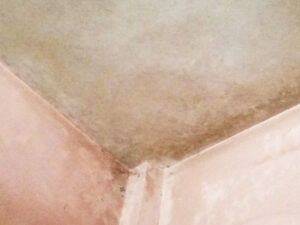As someone who appreciates the romantic atmosphere that candles create, I’ve often struggled to remove the unsightly black soot stains, they leave on my painted walls without damaging the painted surface. An experience that often results in frustration and disappointment.
I’ve come up with several successful methods for cleaning candle soot from painted walls, using simple tools and ingredients readily available at most homes, which work like magic! With their help, walls can quickly return to their original, pristine state.
I will present five effective methods for removing candle soot from painted walls in this article. These strategies are sure to get your walls looking brand new in no time at all. Read on if you’re tired of living with unsightly candle soot stains on them!
What causes candle soot on painted walls?
Candle soot on painted walls is an unfortunate reality for those who enjoy lighting candles in their home, especially those who light more than one candle per week. Soot residue left from burning candles can build up anywhere around a room’s surfaces – including walls, ceilings, and furniture.
Candle soot on painted walls is caused by incomplete combustion of wax and wick, releasing tiny carbon particles into the air, that then settle onto surfaces over time to form unsightly black stains that can be difficult to remove.
Other contributing factors to candle soot on painted walls include the type of wax and wick used, as well as how long the candle is burned. Paraffin wax candles tend to produce more soot than other varieties like beeswax or soy wax. Additionally, those with thick wicks that burn for extended periods tend to create more soot than their counterparts.
Poor ventilation in a room can also contribute to candle soot accumulation on painted walls. As when there is insufficient airflow, the soot particles become trapped and settle on surfaces instead of being carried away by air currents.
To prevent candle soot from accumulating on painted walls, it’s essential to burn candles carefully and select high-quality candles made from natural materials. Furthermore, maintaining adequate ventilation in your room may help minimize how much soot settles onto surfaces.
5 Effective Methods to Remove Candle Soot From Painted Walls
Candles add a cozy, welcoming ambiance to any room, but their soot can leave a mess behind on painted walls, staining and discoloring them, and leaving an unattractive layer that looks dull and dirty. If this problem has you stumped, don’t fret. Here we will explore five effective strategies for removing candle soot from painted walls:

Method 1: Utilize a Dry Cleaning Sponge
One of the easiest and most effective ways to remove candle soot from painted walls is by using a soot sponge. Also known as a dry cleaning sponge or soot scrubbing pad, as one way of doing so. These specially-made sponges absorb soot without needing water or any cleaning solutions for optimal soot absorption. Making it great for use after fires but they’re equally great at eliminating candle soot from painted surfaces! Professional cleaners commonly employ soot sponges when cleaning up after fires. These devices also work just as effectively at getting rid of candle soot from painted surfaces!
To use a dry cleaning sponge effectively, begin by wiping it over the affected area in a gentle circular motion. The sponge will absorb soot from walls while simultaneously lifting it off with light pressure – just be careful not to damage painted surfaces when doing this! When finished using the sponge, vacuum up any leftover particles using a soft brush attachment to a vacuum.
Method 2: Use Vinegar and Water Solution
Another effective solution to clean candle soot from painted walls is a vinegar and water solution. Vinegar acts as a natural cleaning agent that can break down and dissolve candle soot more effectively, making its removal simpler. To create this mixture, combine equal parts white vinegar and water in a spray bottle for easy application.
Spray the solution onto the affected area and allow it to soak for several minutes before using a clean cloth or sponge. To wipe away soot use frequent rinsing to avoid spreading soot around. After you are finished cleaning, use another damp cloth to wipe down any residual soot that remains.
Method 3: Use Baking Soda and Water Paste
Baking Soda and Water Paste Baking soda is an effective natural cleaning agent that can quickly eliminate candle soot on painted walls. To use baking soda effectively, mix it with water to form a paste that should spread easily onto affected areas without dripping or running off.
Apply the paste to the affected area, and allow it to sit for several minutes before wiping it away with a damp cloth or sponge to avoid spreading soot around. Rinse frequently so as to not spread soot further! Once finished cleaning, wipe down with another damp cloth to ensure no residual remains behind.
Method 4: Use Dish Soap and Water Solution
Dish soap is another effective cleaning agent that can help remove candle soot from painted walls. To create this solution, mix several drops of dish soap with warm water in a spray bottle before spraying over walls.
Spray the solution directly onto the area that needs cleaning, then let it sit for several minutes before wiping with a clean cloth or sponge to wipe away soot using frequent rinses of cloth/sponge rinsing to avoid spreading soot further around. Finally, wipe down all surfaces again using another clean and damp cloth to eliminate any remaining residues or spots left by cleaning efforts.
Method 5: Use Commercial Cleaning Products
If none of the methods mentioned above work, consider investing in commercial cleaning products specially made to remove soot and smoke damage. Such products can typically be found at most home improvement stores and used by professional cleaners.
Be sure to read and heed all instructions carefully prior to using any commercial cleaning products, and follow them strictly. Some may require protective gear like gloves or masks. Make sure that these measures are taken.
Are abrasive cleaning methods safe for painted walls?
Applying abrasive cleaning methods on painted walls is risky and could damage their finish. Such methods utilize rough materials or tools such as steel wool, scouring pads, or brushes in order to scrub away dirt.
While these methods can be effective at eliminating tough stains and grime from walls. They can also damage the paint on them in ways, that leave visible scratches or wear away its integrity, leading to unsightly marks or chipping, peeling, or cracking on painted surfaces.
Some abrasive cleaning agents may also be too aggressive for painted walls particularly if their paint has already suffered damage or wear and tear. Chemicals like bleach and ammonia may strip away layers of color leaving behind uneven patches or discoloration on your walls.
To prevent damage to painted walls while cleaning them, it is vital that non-abrasive methods and tools be utilized. Soft sponges or microfiber cloths can help effectively wipe away surface stains and dust without scratching or ruining the paintwork.
To remove stubborn stains, a combination of mild dish soap and warm water should be used to gently scrub the surface. Harsh chemicals or cleaning agents could damage paint further – use mild dish soap instead!
Before applying any cleaning method or product to painted walls, it is a best practice to perform a small test area first to make sure there is no damage or discoloration caused. If in doubt about how best to clean them safely, consulting with professionals or seeking advice from the paint manufacturer would always be recommended.
Final Thoughts
Removing candle soot from painted walls may seem daunting at first, but with the proper tools and techniques, it can be accomplished easily. Dry cleaning sponges, vinegar-water solutions, baking soda-water paste solutions, dish soap-water solutions as well as commercial cleaners are all effective ways of eliminating soot from painted surfaces.
Before employing any of these methods, it’s essential that a small area is first tested to ensure the cleaning solution does not damage or discolor your painted walls. Also, remember to apply gentle pressure when cleaning in order to avoid damaging its surface.
Prevention is key when it comes to avoiding candle soot buildup on painted walls, so be sure to trim the wick of your candles to minimize soot accumulation, avoid burning candles in drafty environments or near air vents, and use candle holders on stable surfaces with smooth surfaces to avoid spills and soot accumulation.







